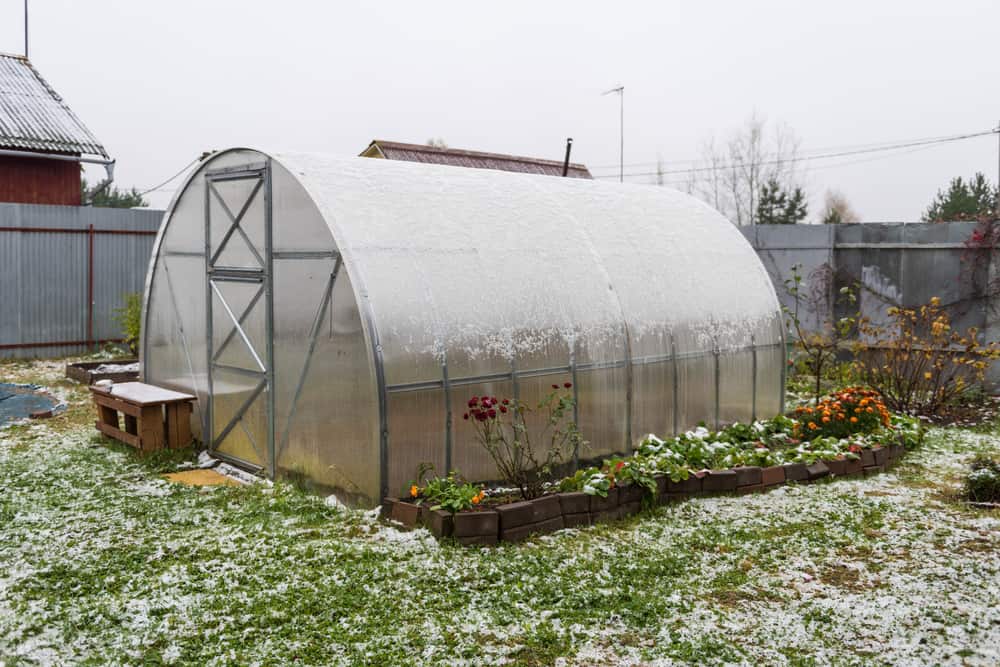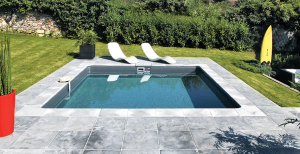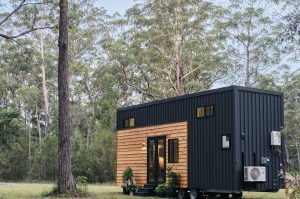SOMMAIRE
If you buy an item via links on this page, we may earn a commission. Our editorial content is not influenced by commissions. Read the full disclosure.
A four-season garden is exactly as it sounds; it’s a garden that can be used at all times of the year. No more waiting through the winter for your chance to grow and harvest fresh crops from your garden.
Using cool-season crops and methods of extending the growing season like cold frames and hoop houses, a four-season garden provides food all year long.
Here’s your guide to planning and cultivating the ultimate four-season garden.
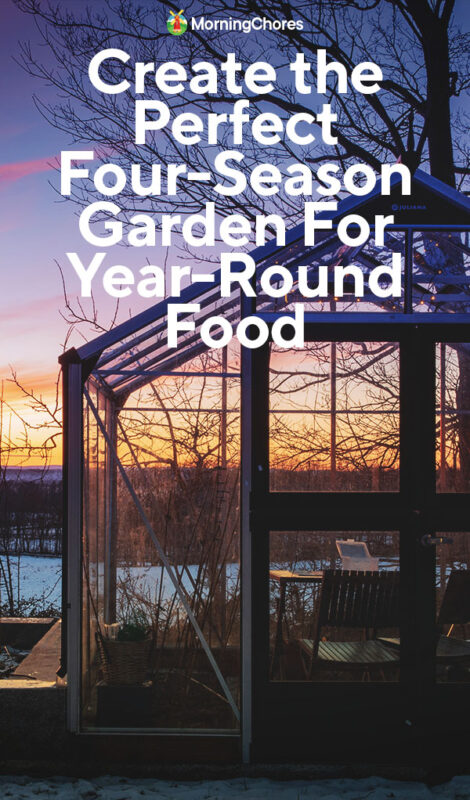
What To Consider for a Four-Season Garden
Eliot Colman wrote the Four-Season Harvest book, which established and explained his method of providing harvests all year round.
In gardening, crops fall into two categories: cold-season and warm-season crops. While most of us are familiar with growing warm-season crops like melons, tomatoes, and peppers, cold-season crops can be used to extend the growing season well into winter.
Winter
Some people get excited and some people feel sad when they hear the word “winter,” but just because the skies become dark and the snow starts falling doesn’t mean you can’t keep harvesting fresh, delicious veggies and herbs.
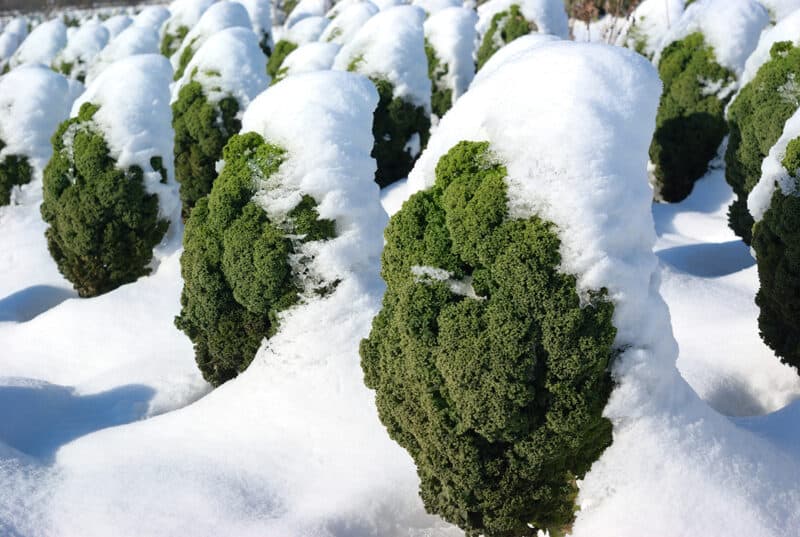
These cold-season crops can be grown even in near-freezing temperatures, which makes them perfect for the winter months:
- Collards
- Kale
- Broccoli
- Parsnips
- Carrots
- Leeks
- Garlic
- Potatoes
- Beets
- Cabbage
- Celeriac
- Chicory
- Claytonia
- Dandelion
- Endive
- Kohlrabi
- Radicchio
- Radishes
- Tatsoi
- Turnips
- Spinach
- Lettuce
The trick is that some of these crops will need protection if you want them to grow well. We’ll talk about ways to extend the harvest using cold frames and tunnels in just a bit.
Most of the plants on this list will need to be planted in late summer or fall, but short-season crops like lettuce, spinach, and turnips can be planted in the dead of winter.
Spring
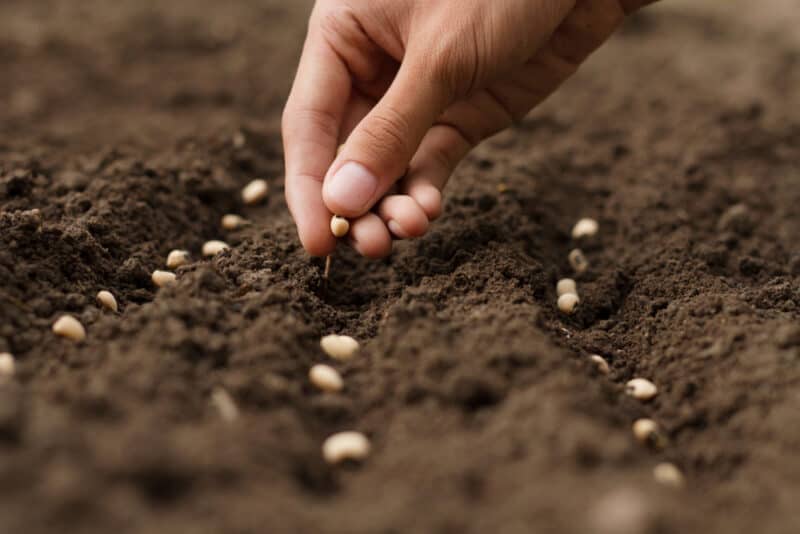
After winter, spring comes around to cheer up your mood as the flowers start to bloom and you can begin your gardening in earnest. As the temperatures rise slowly, most gardeners begin spending more time in the outdoor space and planting seeds for the rest of the year.
Here are some of the most popular crops to grow in spring:
- Cucumber
- Beetroot
- Tomatoes
- Peppers
- Parsley
- Mint
- Melons
- Strawberries
- Broccoli
- Brussels sprouts
In addition, you can plant any of the winter crops mentioned above.
By the way, though we’re mostly focused on growing veggies, why not toss in some lavender, sunflower, sedum, or echinacea to add some edible color to your summer garden? These plants attract pollinators and they’re edible.
When planning your spring garden, it’s important to remember that a late frost might still come. Be ready to provide protection with frost cloth, blankets, or cardboard. If you’re using a cold frame, greenhouse, or tunnels, plant tender spring crops like peppers and tomatoes there.
Summer
Summer is one of the busiest times for gardening, so you must plan well in advance when planting and growing crops in your garden. At this point, you probably aren’t planting much, but rather caring for your existing plants.
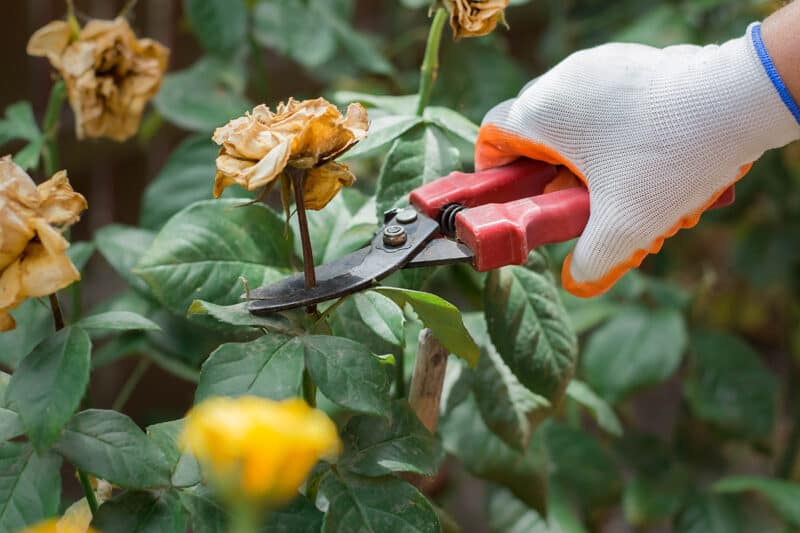
You can spend the summer days deadheading, weeding, watering, and trimming the hedges in your garden.
But this is an excellent time to plant crops for harvesting during the winter.
Things like beans, beets, cabbage, carrots, cauliflower, celery, chard, chicory, claytonia, eggplant, endive, kale, leek, lettuce, mizuna, parsnip, potato, radicchio, radishes, salsify, sorrel, spinach, tatsoi, and turnips can all go in the ground starting in June, depending where you live.
To help you keep on track, it’s good to write a checklist so you can refer back to it throughout the year. This will allow you to stay on top of your four-season garden and ensure it looks fantastic every season.
Fall
The first sign of fall for some people is when the trees and plants start changing color. Whatever signals fall to you, it’s a great time to think about what you will grow in your winter garden.
Now is the time to start prepping and planting some of those veggies that will feed you throughout the winter. While some of the longer-season veggies that we mentioned above should already be in the ground, there are a few things you can plant for a quick harvest before the winter cold.
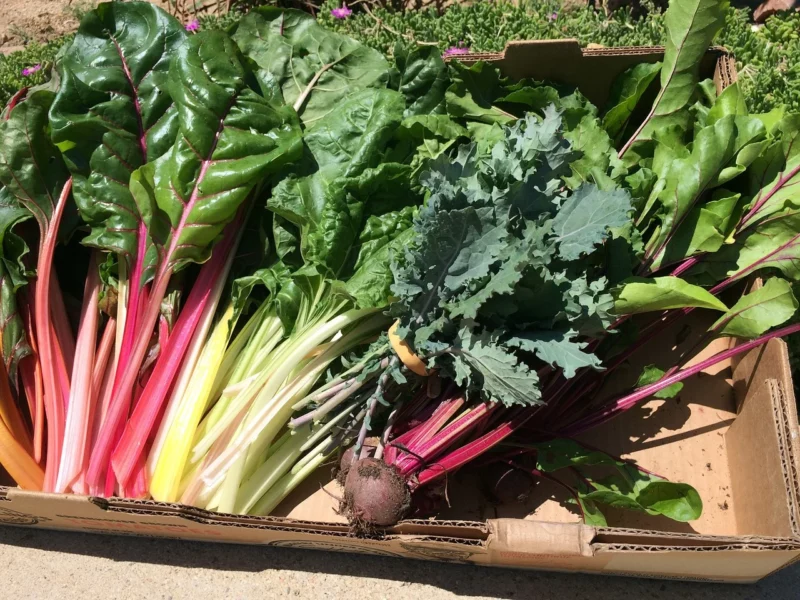
Turnips, spinach, lettuce, peas, mizuna, kale, claytonia, chard, cabbage, and beets all make excellent fall crops.
This is also the time to attend to some of those important fall chores.
Instead of removing leftover manure or leaves, you can mix them for organic compost. You should also make time to cover your garden furniture before winter approaches. Even though the temperatures start to drop in fall, you can still look at a colorful garden.
How To Extend the Growing Season
Planting and maintaining a four-season garden can be done without any additional tools, but if you really want to extend the growing season, there are a few ways to go about it.
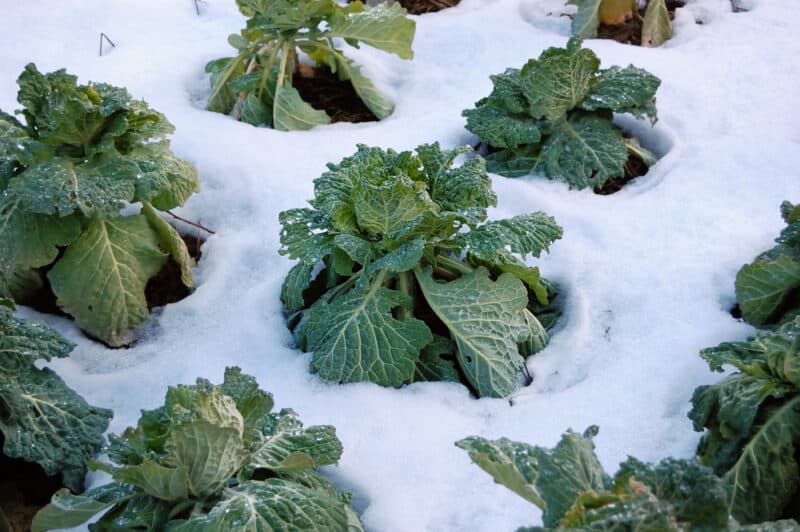
Microclimates
To fully take advantage of four-season gardening, you need to be aware of the microclimates in your garden and how to take advantage of them.
A microclimate refers to a small area that has differing conditions from the general area around it. For instance, the top of a hill might have a windy microclimate. The south side of a garden near a brick wall might be hotter than the surrounding area.
You can start by planting fall crops near walls that absorb and reflect heat, so that will be anything made from concrete or brick. Or choose south-facing slopes with full sun exposure.
Avoid planting sensitive crops in low areas as frost can stay here for extended periods.
We talk more about microclimates and how to harness them in our guide.
Install Cold Frames or Cloches
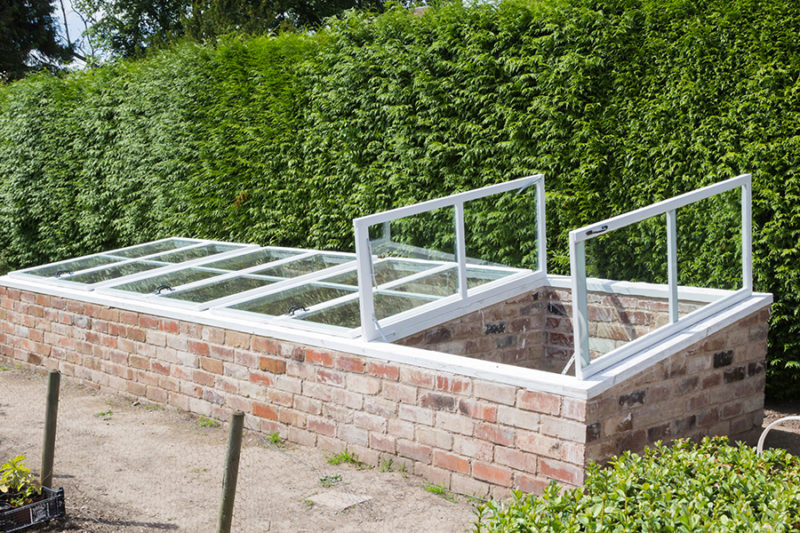
Cold frames are a time-tested way to extend the growing period of crops. They can be built to any size, so they’re perfect if you want to harvest a lot of vegetables or fruit even during the winter. A cold frame should be built sturdy and heavy so strong winds won’t damage it.
You can also try cloche, which is portable and can be placed over smaller areas of the garden. Unlike cold frames, these are easy to install, and you can buy them for little money.
A cloche is more flexible and can be moved, so you can alter the location depending on what crops need a little more protection.
Tunnels

You can use easy-to-create low or high tunnels to dramatically extend your harvest. Eliot Coleman uses tunnels to grow arugula, carrots, chard, chicory, claytonia, dandelions, endive, escarole, kale, kohlrabi, leeks, mache, mizuna, onion greens, parsley, radicchio, sorrel, spinach, and tatsoi from September through February.
And he lives in Zone 5!
You don’t need an expensive, complicated setup. Just some plastic pipes bent to create a frame and some plastic or frost cloth and you can keep growing all year long.
Add a Greenhouse to Your Garden
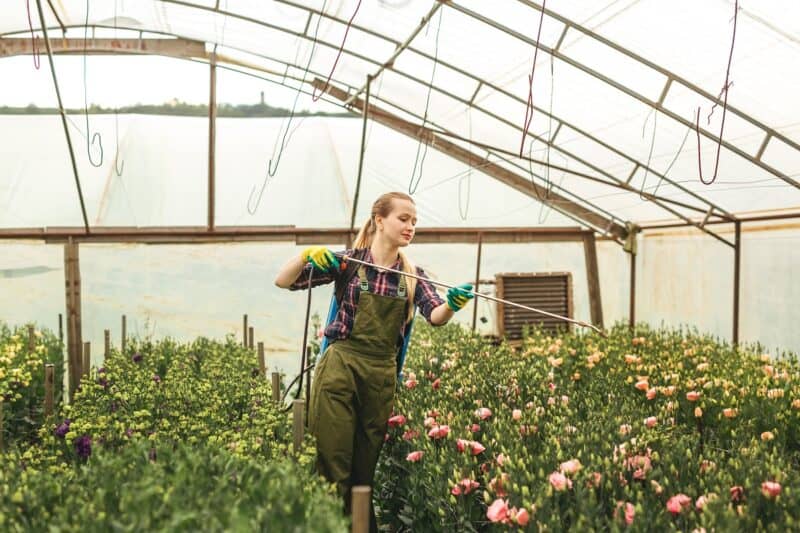
You can protect your garden plants and crops even more with the addition of a greenhouse. It costs more and requires more room than some other options, but once the greenhouse is installed, it can be used throughout the year.
If you’re seriously committed to a four-season garden, then it’s worth considering a greenhouse so you can manage and control the climate for your crops. We can never predict the weather for every season, but a greenhouse is the closest thing to giving your plants their ideal habitat.
If you install lights and heating, you can truly have a year-round harvest that includes even tender herbs and veggies.
Other Things to Consider
Winter presents a few unique challenges when it comes to gardening.
For instance, you could install solar lights for dark nights while looking after your plants. You’ll need to have enough light when walking around the garden, so you don’t accidentally trip and injure yourself.
It’s not all about work, though. Make some time to enjoy the outdoors in your garden during the winter.
To make things cozy, you could put a fire pit in the garden so you can sit outside and look at the stars in winter. Take advantage of this setup during the holidays when you get together with friends and family.
In winter, some birds stick around home gardens for food and shelter, so it’s an excellent time to lay out some extra bird food and houses for these creatures. Then you can’t sit and watch their antics as you enjoy your garden.
Spécialiste jardin et bricolage, j’adore rédiger des articles qui aide les lecteurs à améliorer leur maison ! Souvent connecté, n’hésitez pas à poser vos questions !

